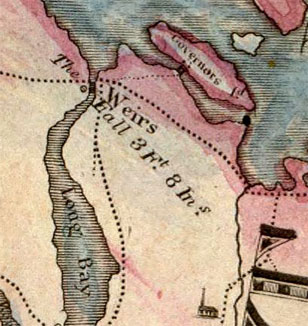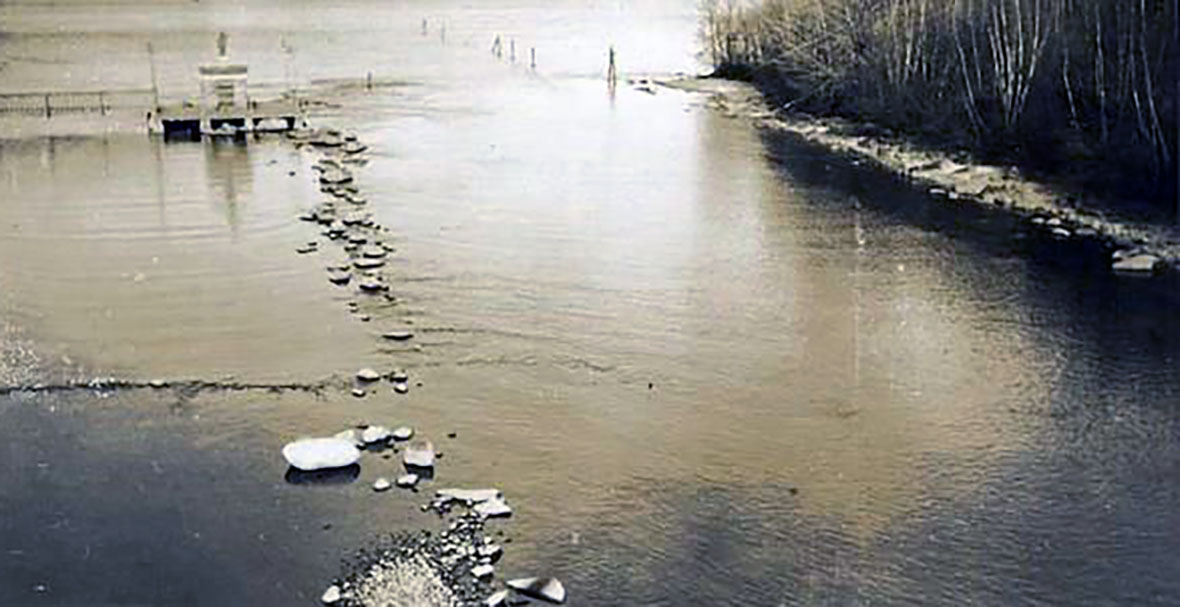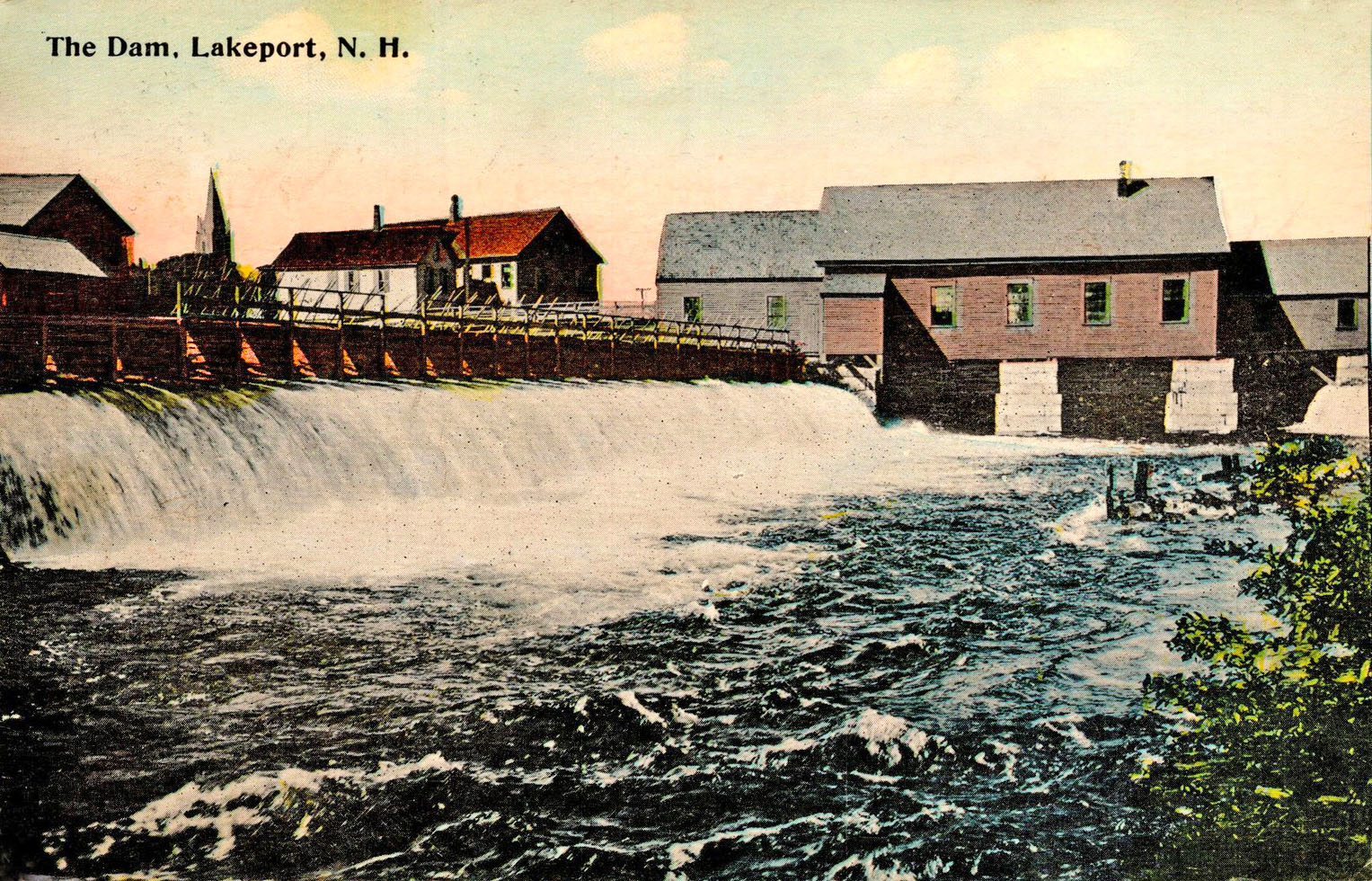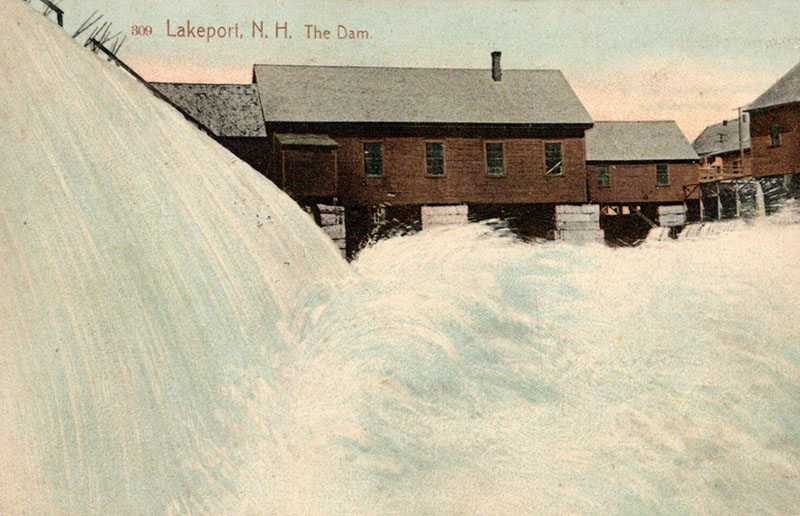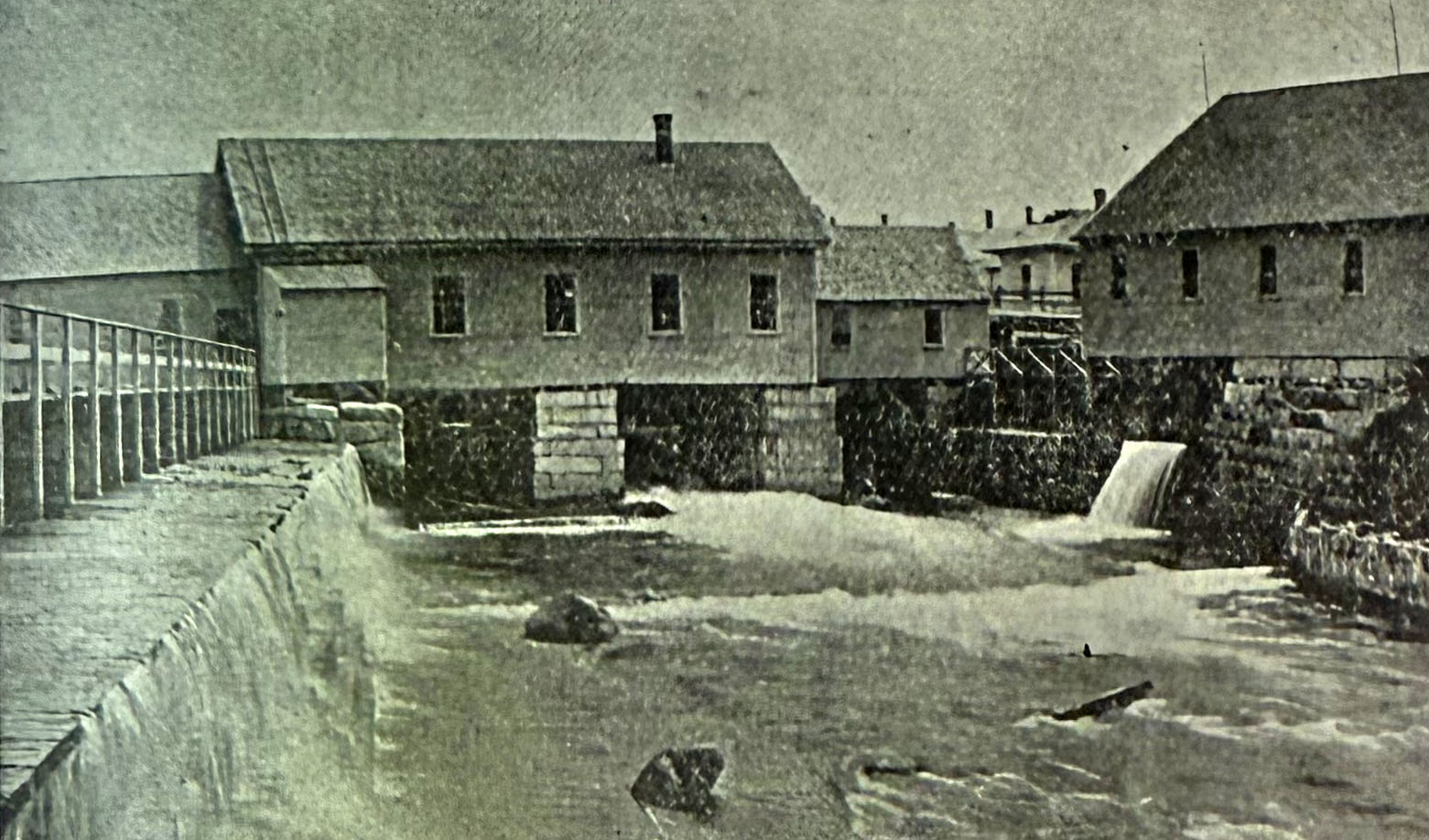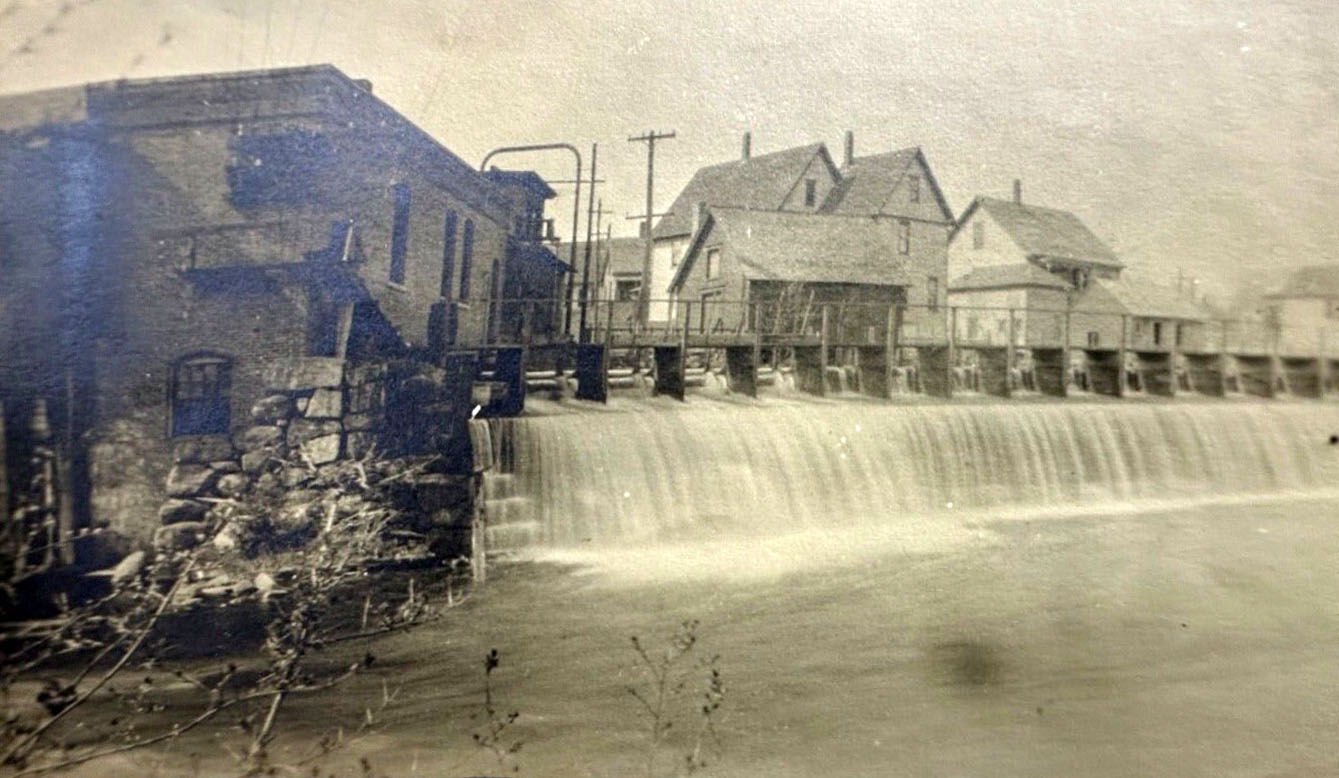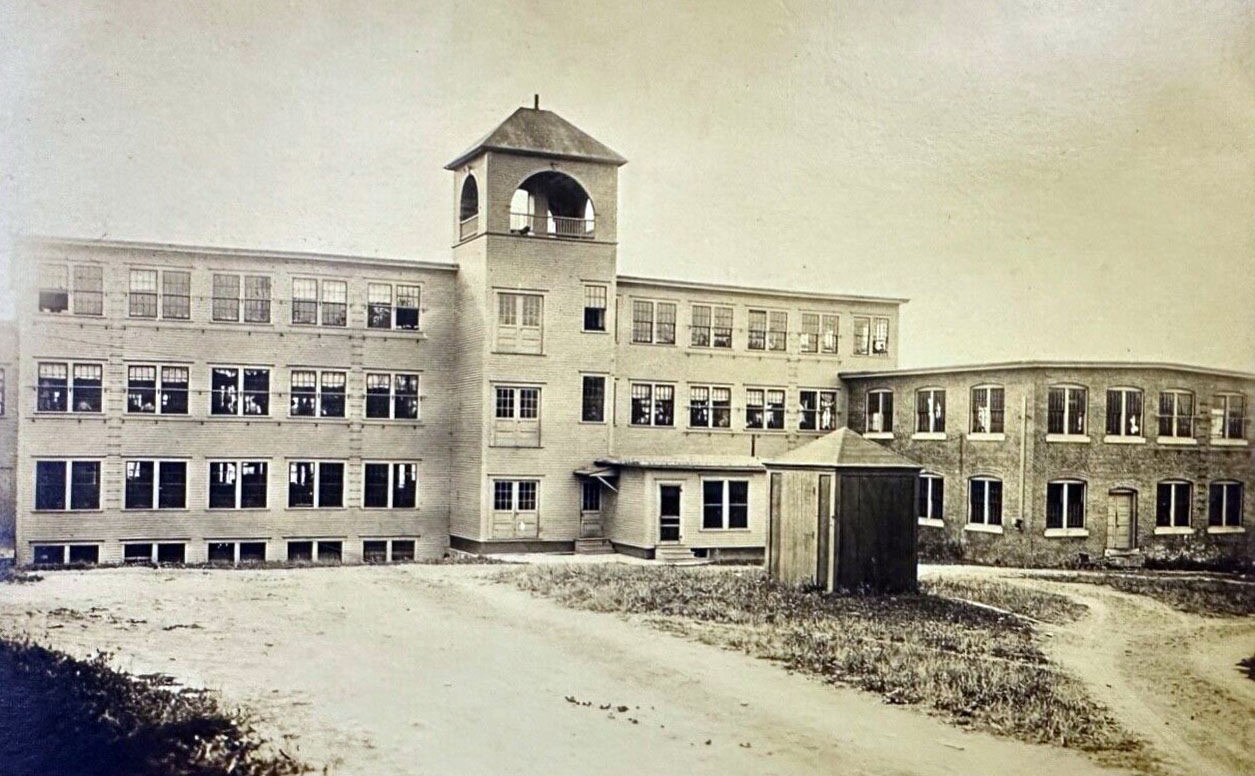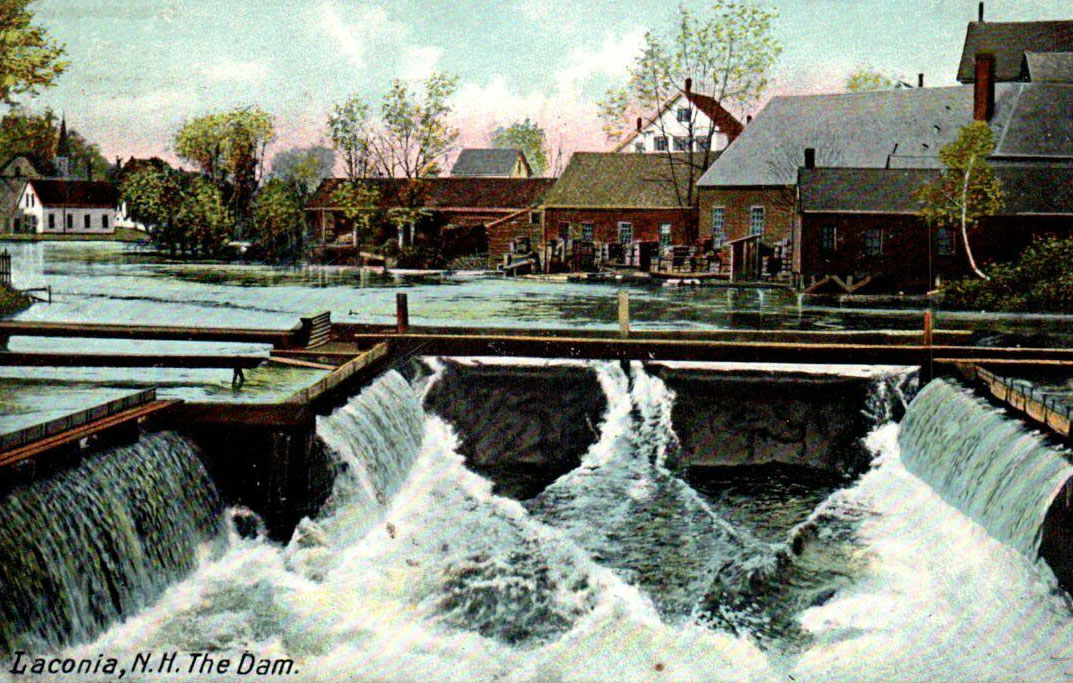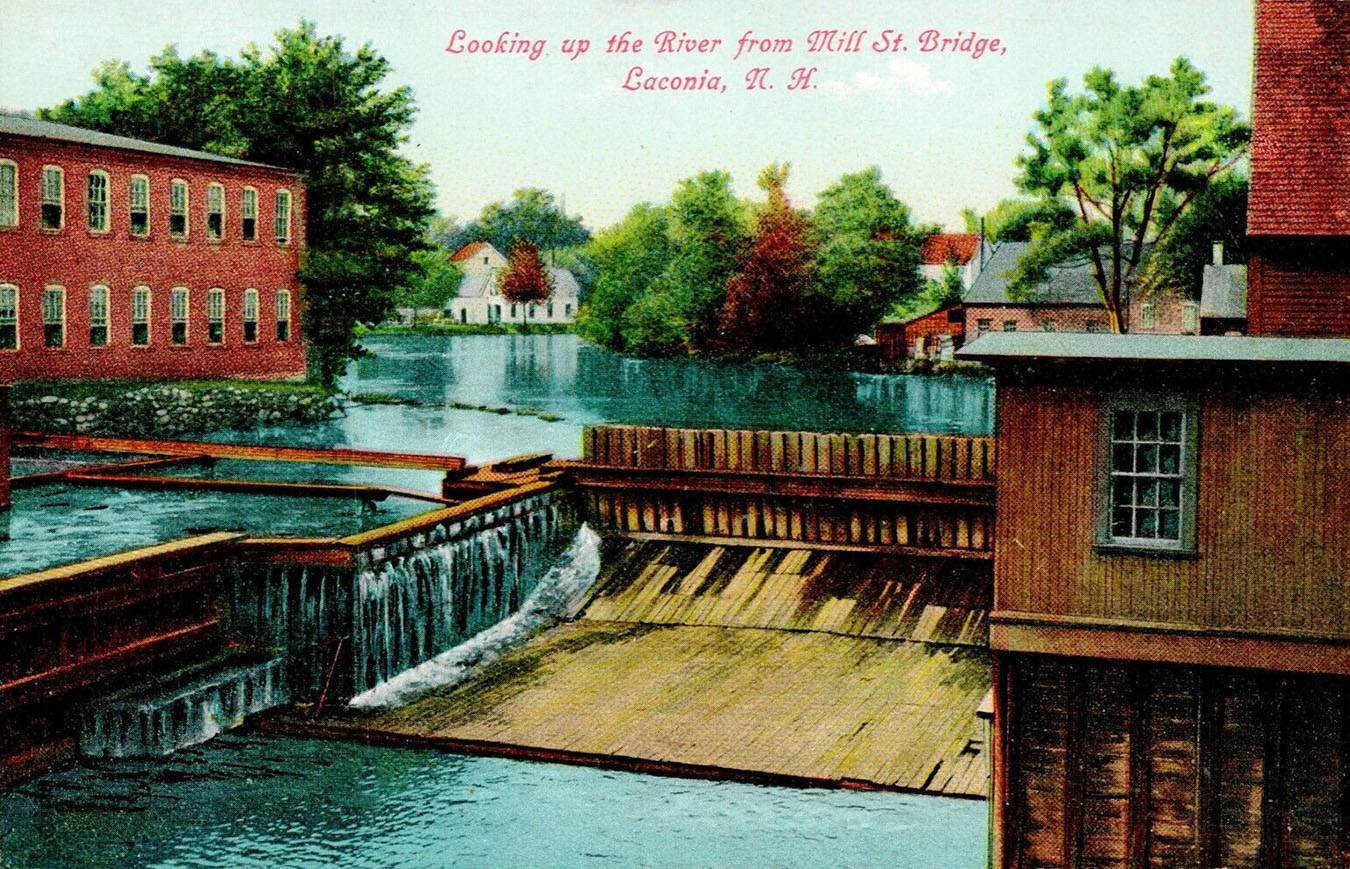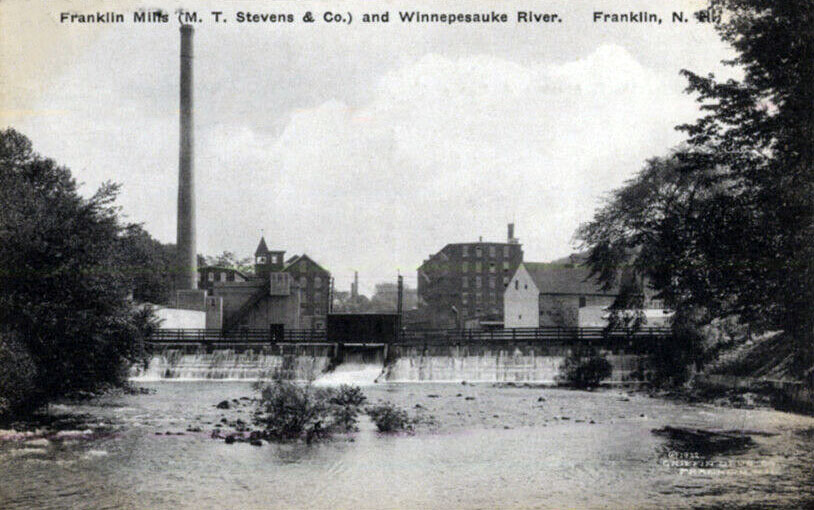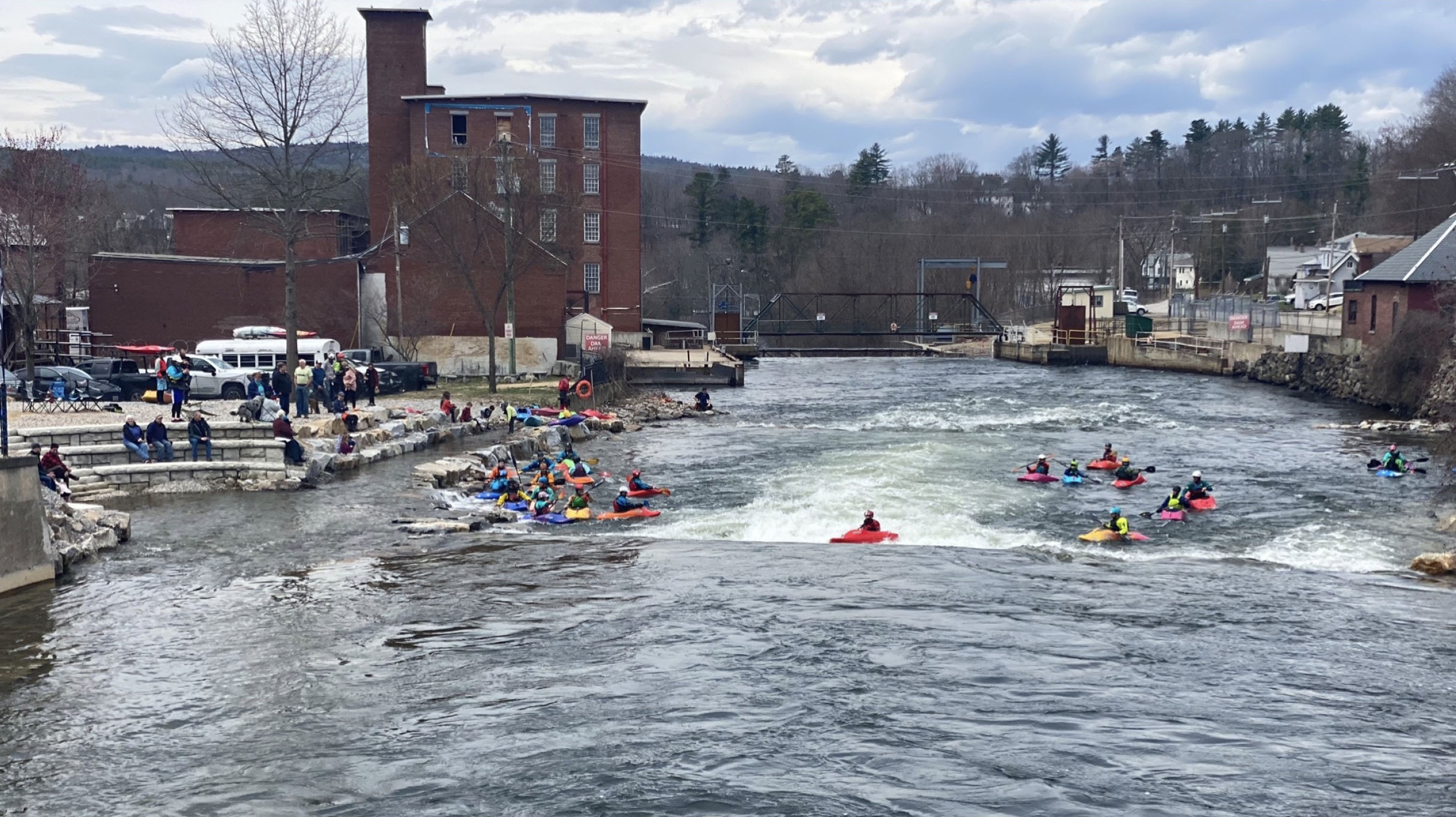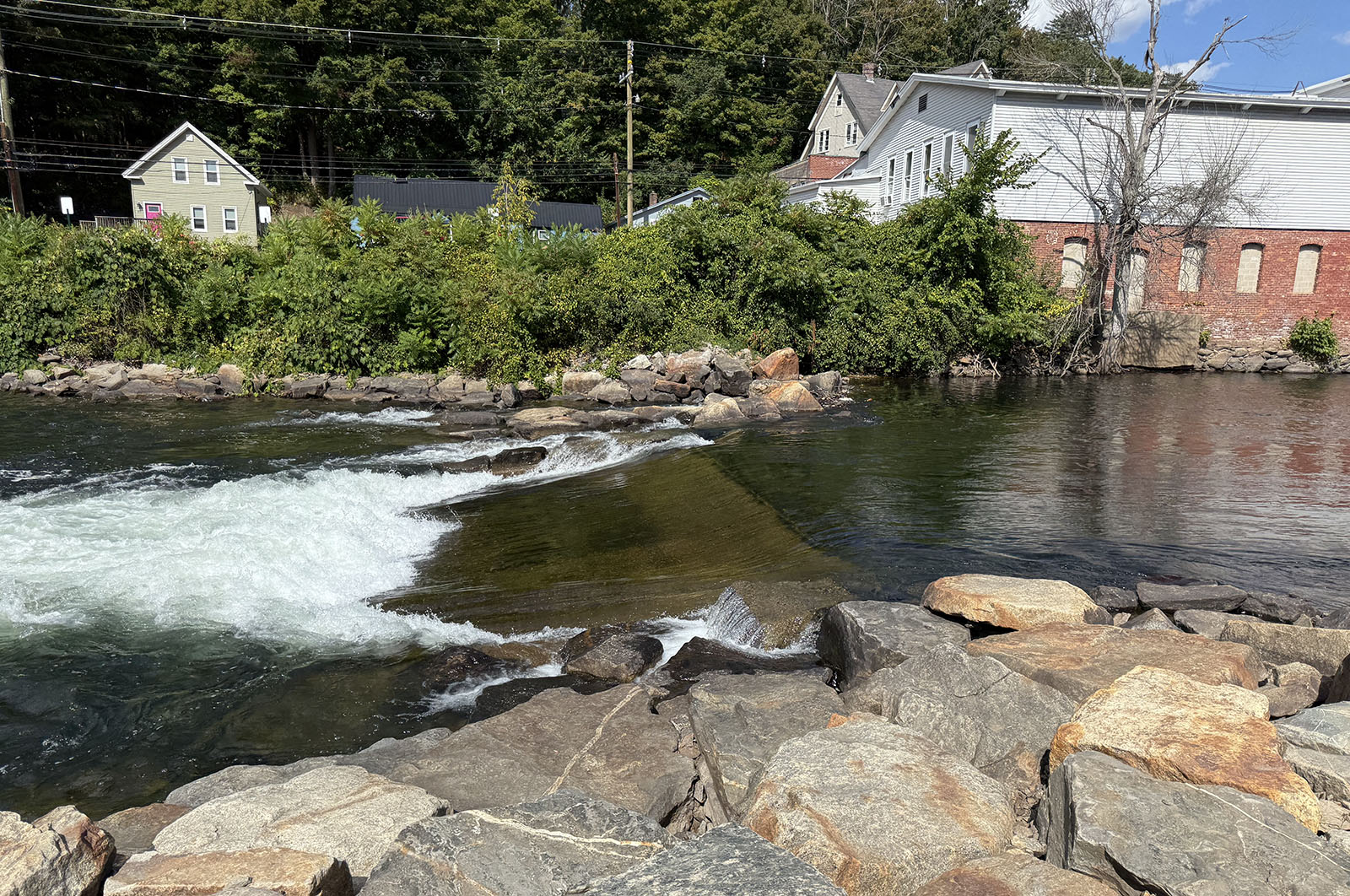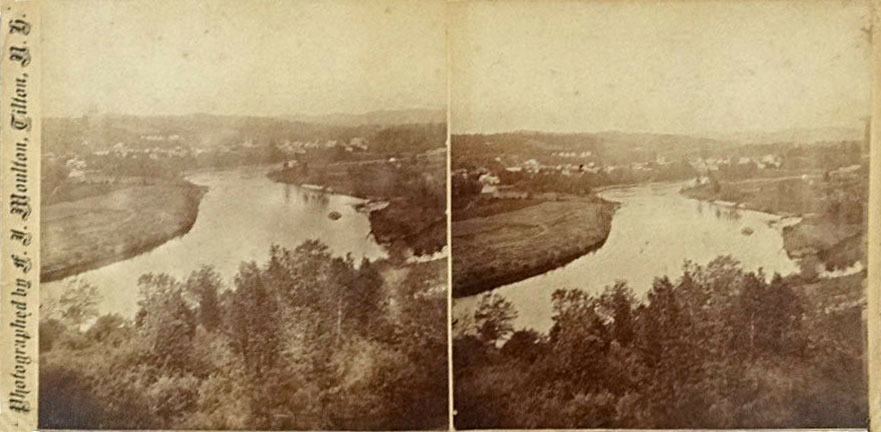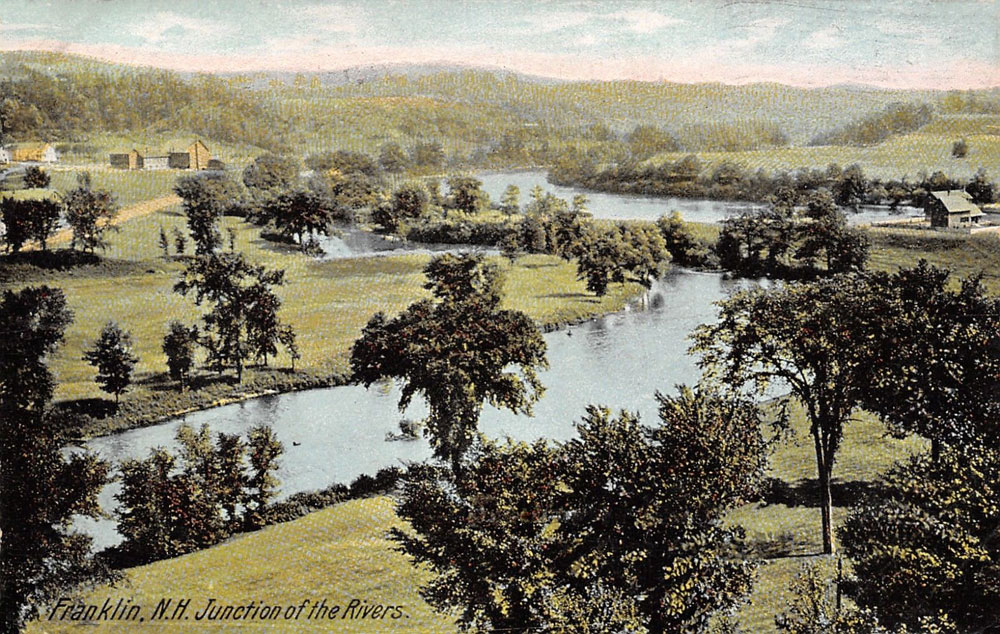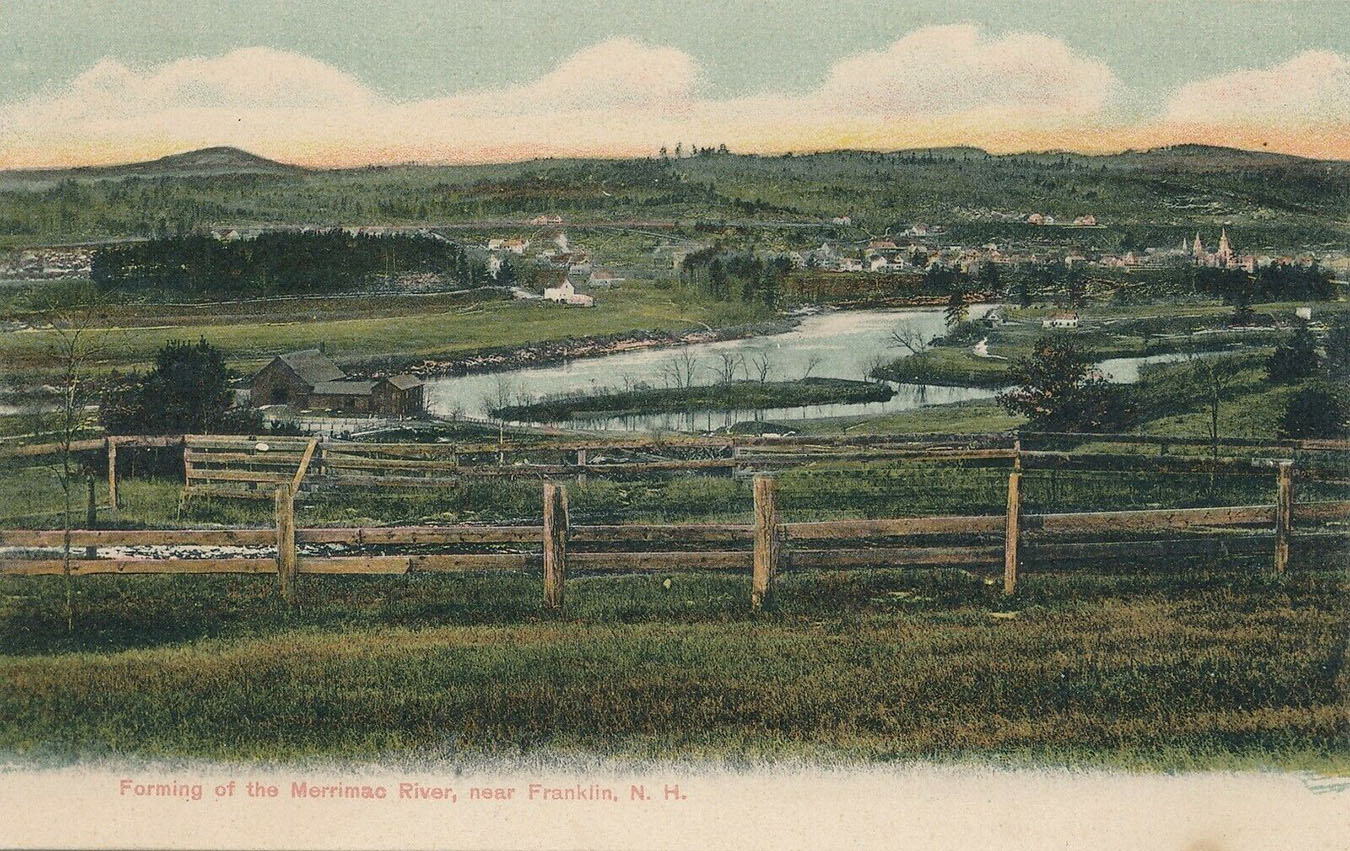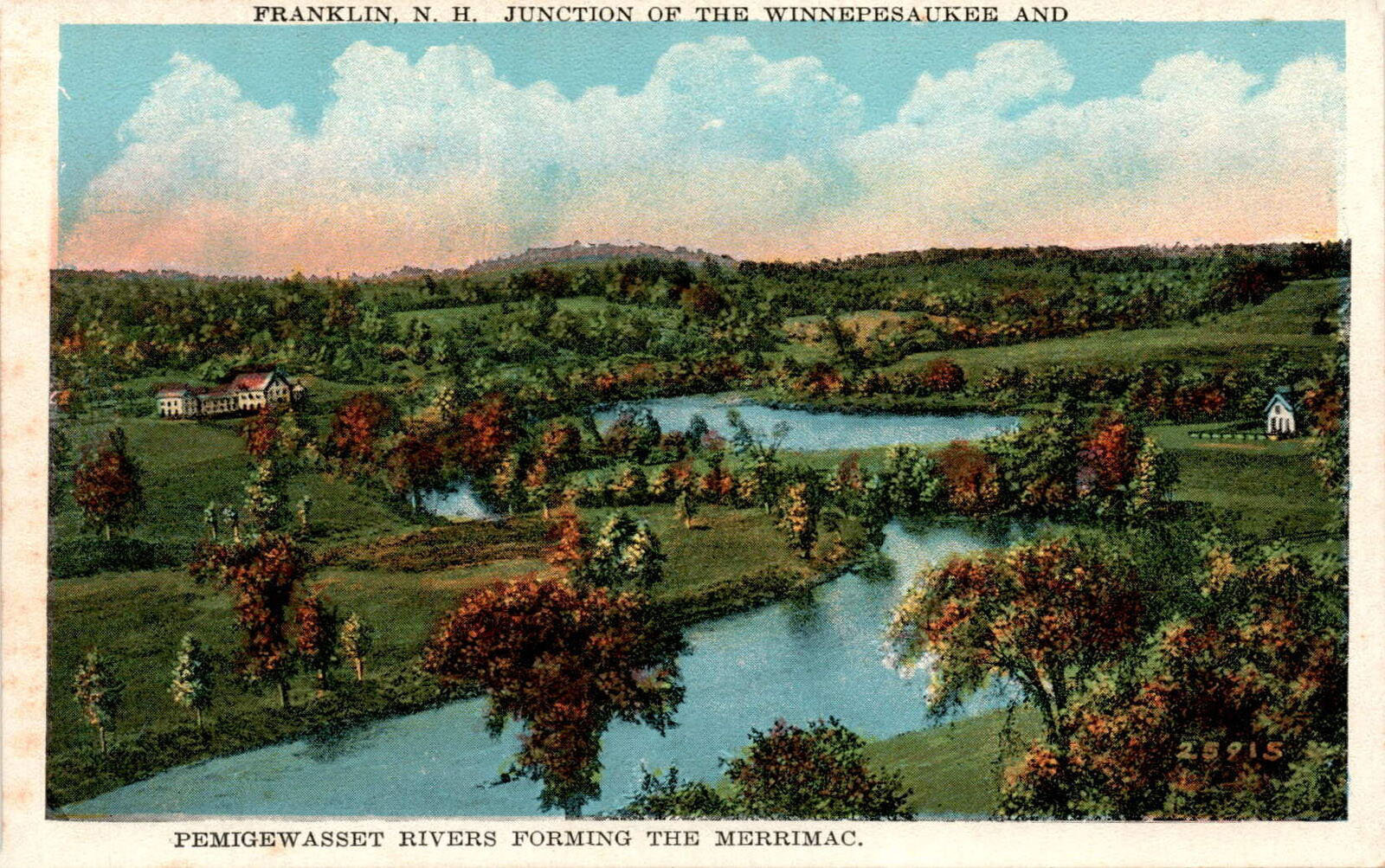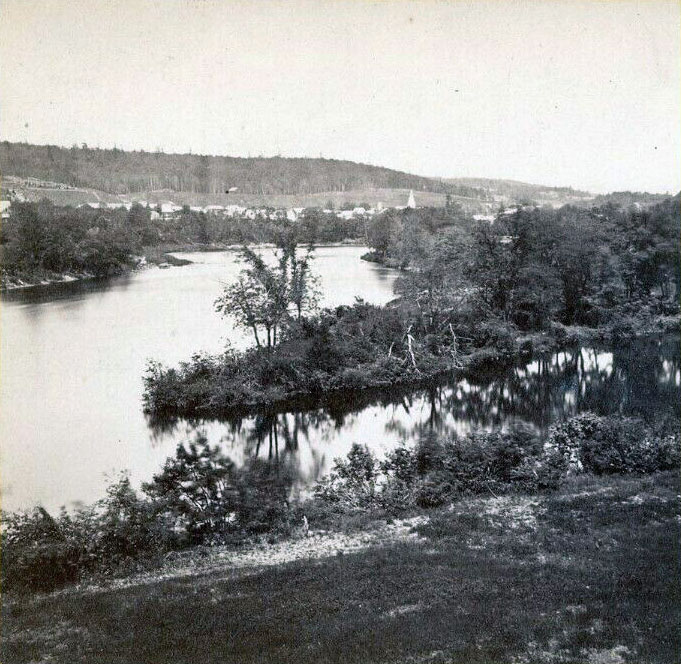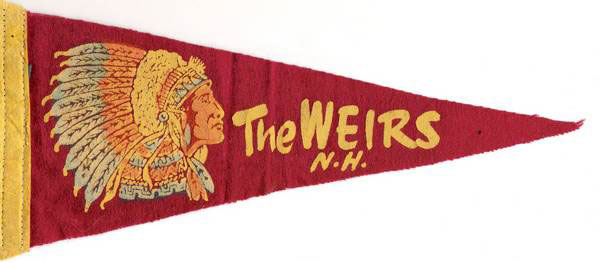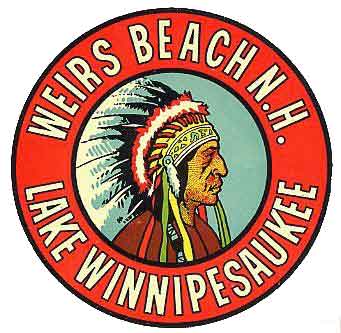Natives
When did Native Americans inhabit Weirs Beach?
Before the 1829 Lakeport dam raised the Lake level, the Weirs Channel was actually a short river – there was a 3 foot, 8 inch drop from the Lake to Paugus Bay! Detail from an 1816 map. The Indian fish weirs were built just upstream of the falls, where the channel was quite shallow, from two to five feet in depth.
Weirs Beach has been habitated for thousands of years. A 1976 archeological excavation at the beach, led by Charles Bolian, a Professor of Anthropology at the University of New Hampshire, found that Native Americans used the area as a summer camp for hunting and fishing as long ago as 8000 B.C! In 1931, the first scientific look at the area, the Merrimack Archaeological Survey by Warren Moorehead, had estimated the campsite population at over 400 people. The Aquedoctan archeological site at the beach was added to the National Register of Historic Places in 1975.
The campsite extended in a long arc. It started at Doe Point in the Methodist campground, ran along the lake shoreline to the Weirs Channel, then along the western shoreline of Paugus Bay as far as Moulton Cove. There was considerable fairly level space all along the shore for the wigwams and cornfields. Before the original Lakeport dam was built in the 1780s, the level of the Lake was roughly 5′-12′ lower than it is today, so much of the original campsite is now under water! Around 1000 B.C. the inhabitants began living there in a year-round village rather than just camping there during the summer. The location provided a source of year-round water, as the Channel does not freeze in the winter, and it was well buffered from winter winds by the mass of Brickyard Mountain.
The native tribe of Winnepiseogees shared their name with the Lake, belonged to the Pennacook confederacy, and were ethnically Western Abenakis, who were part of the Algonquian peoples. They called their village Agua-dak-‘gan (Aquedoctan), meaning “a landing for portage” (agua-dak, a landing, and ‘gan, short for wnigan, portage). (The older, probably incorrect interpretation of the name was that Aquedoctan meant “a place of good fishing”. A newer interpretation of the name spells it as Adelahigan and the meaning as “barring-the-way-thing”.) However, according to Frederick Matthew Wiseman, a Native American and author of “The Voice of the Dawn: An Auto-history of the Abenaki Nation”, the village was actually named Nonegonnikon Wiwinebesaki, meaning “a village at the lake in the vicinity of which there are other lakes and ponds”, from wiwini, (around, in the vicinity), nebes (lakes or ponds), and aki (region or territory) – literally, Lakes Region Village. For more about the meaning of the name of the Lake, click here.
For fishing, the villagers built a special type of fish trap, called a WEIR, (also known as an Ahquedakenash) to capture the abundant migratory species – both fish (American shad) and eels (American eels). In the spring, both species migrated upriver on their 128 mile journey from the sea — first up the Merrimack River, then up the Winnipesaukee River, and finally through the Weirs Channel to Lake Winnipesaukee. In the fall, the migration route was reversed. In the spring, it was the fat, adult shad that were caught and kept. The spring eels would be in their immature, 2″ – 6″, elver stage, and let go. In the fall, it was the young, 3″ – 4″ shad that were let go, while the mature, silver eels, averaging about 1.5′ – 2′ long, were caught and consumed.
The WEIRS went into the channel to block the species from passing through, effectively trapping them. The original fishing WEIRS had been made of wooden fencing in the form of a “W”and stretched across the entire width of the channel. The lower two points of the “W” pointed downstream towards Paugus Bay and were utilized during the fall down-river migration. This diverted the species from the middle of the channel towards the riverbanks, allowing the natives to more easily scoop the fish from either side of the Weirs Channel. Historian E.P. Jewell wrote that the points of the “W” were “…left open a few feet for the water and fish to pass through. A short distance above the opening another fence was built in a half-circle, and into the spaces was placed wicker-work, made of small saplings, through which the water could easily flow, but fine enough to entrap fish of any considerable size.” During the spring, during the up-river migration, the upper point of the “W”, which pointed upstream towards the lake from the middle of the Weirs Channel, was used. The natives would paddle their canoes to the middle of the channel, load them up with fish, and deliver them to the squaws waiting on the riverbanks to split and smoke them.
Historian Solon B. Colby explained how the wooden fencing was made. “The Indians built temporary weirs of stakes and interwoven brush. Where the river bottom was too hard to drive a stake, the Indians would place two good sized rocks where needed, with an upright placed between them. When enough uprights or stakes had been properly placed, brush was interwoven with the uprights to make a fence which permitted the water to pass through but guided the fish to openings in the weirs and into the nets of the Indians. The brush remained in the Weirs Channel until the ice went out in the spring, taking the lightly-constructed fish weirs with it. New weirs were built during the last two weeks of May in preparation for the shad run which began about June 1st.”
Jewell adds, “When the white settlers came, the ‘Weirs’ were in a good state of preservation and were made use of by them. Fish wardens were appointed annually, whose duty it was to go two days each week to see that the fish were fairly distributed among the people assembled to wait for them. With the exception of the two days a week when the wardens were present, anyone could take fish from the traps. Frequently the early settlers would find the basket-like traps well filled with fine fish, and all our fathers had to do was to take out the helpless captives.”
Colby contradicts Jewell’s statement that the weirs were preserved. “When the early settlers came to Aquadoctan in 1765, seventy years after the Indians had left, the uprights and brush had long been gone, but many of the rocks which once braced the uprights could still be seen scattered along the channel bottom.” However, the early settlers soon built their own weirs. Colby notes that, “The banks of the Winnipesaukee River were occupied by early settlers in preference to the other localities because of the fishing facilities which that river afforded. The eels and shad for which the Winnipesaukee was once famous, were essential to the settlers as a means of subsistence until their crops came into bearing.”
“In the early days these fish were thought of sufficient importance that acts were passed by localities to preserve the fish. One of the preservation methods was to ban construction of weirs that were built from opposite sides of the river so as to span the whole stream, which would be damaging to those who built their weirs farther downstream. Wardens were employed to “…see that ye river is not encumbered by wares; and that one half the river be kept clear…on penalty of twenty shillings upon every man who shall build a ware more than half across.”
Warren Morehead, in his 1931 Merrimack Archaeological Survey, noted that the Weirs “…take its name from the very extensive fish traps maintained by the Indians at the outlet. Governor Endicott and his people heard of the importance of this center and visited the Indians. There are not wanting descriptions in our earliest records of fish taking at this spot, and doubtless many tons of dried fish were prepared by the Red Men for winter consumption. Some of the stones, which held in place the wooden weirs, may be observed even at the present time. It is sad to record that most of them were removed from their ancient resting place in order that a deeper channel might be utilized by speed boats. As there are more than forty miles of waterways available northwest of The Weirs bridge, and not much more than a mile below the bridge, it is not merely unfortunate but inexcusable that such vandalism should have occurred. Those ancient weirs deserved a better fate.”
A popular misconception was that the Indian Weirs were made of sturdy stone walls, and that their remains were still in evidence until the dredging of the Weirs Channel in the early 1950’s. Colby stated that the visible stones were remnants of an earlier wing dam built in the channel. The wing dam had been built like a stone wall, with stones gathered from the channel bottom. According to Colby, when the channel was dredged in 1833, the stones were “…erroneously described by journalists as the remains of an ancient Indian fish-weir.”
Several miller’s dams were built in the Weirs Channel from circa 1795 until 1829. Click on the link for extensive info about the Weirs Channel miller’s dams.
Artistic depiction of the stone Weirs.
The photo below shows remains of the Weirs. On the back of the photo, an unknown author wrote, “The low water shows some of these walls that look like small pens, which can be seen from the bridge today. Many different tribes of Indians went to the Weirs for their supply of fish. They had made a trap of stones in the channel to catch the fish in the form of the letter W. The lower points of the letter extended below the bridge, and the upper walls touched the shore some distance above towards the lake. The trap was built so high that the water did not often cover the stones. At the lower points there was an opening left, so the fish could easily run thru. Below these points, a half circle was made of small saplings thru which the water would run, but after the fish swam into these, they could not turn back. If there were not many fish in the traps, the Indians went out with long poles and branches of trees, beat the water in the lake, and drove the fish into the traps. The Indians dipped them out with their “Wiccopee” baskets, made out a tough bark that grew nearby. They then dried them for future use.” Click on the link for more info about the bark and an illustration of Ancient Aquedoctan.
Map of Abenaki tribes of New Hampshire. From “Indians of New Hampshire”, a booklet first published in 1965. Author and historian Eva Augusta Speare (1875-1972) was known as Plymouth’s “First Lady”. According to Speare, “English settlers estimated that New England was inhabited by 50,000 Indians, but New Hampshire probably did not have over 5000 Red-men…”
The adult shad migration from the sea to the lake peaked during the first two weeks of June; while the young shad migration from the lake to the sea peaked during the late summer. Colby wrote,
“Our forefathers told marvelous stories about the abundance of fish in the Merrimack River and its two main branches, the Pemigewasset and the Winnipesaukee. The fish were fat, huge, and luscious, moving upstream in such numbers in spring or spawning time as to blacken the river with their backs. While the shad and salmon swam together up the Merrimack river, they parted company at the junction of the Pemigewasset and Winnipesaukee rivers in Franklin. The salmon, delighting in cold, swift water, swam up the Pemigewasset. The shad, much larger fish that sought large lakes for spawning where the water was warm and abundant, swam up the Winnipesaukee.”
“The shad as a rule reached Pawtucket Falls at Lowell about the first week in May; by May fifteenth they were at Amoskeag, and by the last week in May they could be found in the Winnipesaukee River. At this time the water would be literally crowded with shad weighing from three to five pounds. In some sections of the Winnipesaukee River, natural obstructions made it unnecessary to set up weirs. Certain pools were so full of shad that one Indian with a dipnet or spear could take several hundred pounds in one day.”
“The old shad returned to the sea in August in an emaciated condition due to their having fasted during their spawning activities. If any were found in eel-pots they were always liberated with the reasonable assurance that they would be in better condition when they returned the following year. The young shad started their migration to the ocean in September at which time they were only three or four inches in length.” (Unlike salmon, who die right after spawning, American Shad have several reproductive cycles during their lifetime. Both young and old shad were let go in the fall as they would return fattened up the following spring.)
It is unknown exactly when the shad ended migrating to and from the lake, however, it is clear that the many dams, as well as canals and locks, built in the 18th and 19th centuries along the Merrimack and Winnipesaukee River caused the migration to collapse. In 1789, an estimated 830,000 shad were caught in the Merrimack; but by 1888, the Merrimack catch was zero.
The Lowell and Lawrence mills in Massachusetts, recognizing that control of the Merrimack’s sources in New Hampshire was crucial to the water delivery system which powered their mills, joined forces in the 1840’s to buy rights to the waters of Lake Winnipesaukee, Newfound Lake, and Squam Lake. The company they formed was called simply the Lake Company, a successor to the Winnipisiogee Lake Cotton and Woolen Manufacturing Company. Their quiet and stealthy acquistion of water rights between 1845-1856 set off what was known as the Winnipesaukee Water War, which the Lake Company won. The issue was the overall level of the lake, which even today can be a topic of disagreement. Either the water level was too high, flooding shoreline farmland, or it was too low, impeding navigation and lowering water power to local mills.
Noted Weirs historian Edgar H. Wilcomb, on pages 15-18 of his 1923 booklet, “The Lakeport Cleft“, wrote a chapter titled “Beautiful But Damned”, where he condemns the Lake Company in no uncertain terms. Writes Wilcomb, “One of the most shameful public acts ever to be perpetrated in the State of New Hampshire was the conveyance of the rights of the people of the state to a foreign-owned corporation, whereby the waters of Lake Winnipesaukee are entirely controlled for the benefit of another state…Are we to be forever beholden to a flim-flam arrangement that was worked upon our unsophisticated ancestors by a gang of Massachusetts sharps?”
The “Water War” ended quitely nearly a century later. In the 1930s, the Lake Company sold their water rights to the International Paper Company. In 1943, PSNH took ownership of the Lakeport Dam. In 1958, the New Hampshire state government finally took control of the Lakes Region water flow.
Even today, the Merrimack still supplies power to cities and industry, via five hydroelectric dams on the river, and almost 100 small power projects. The Anadromous Fish Conservation Act of 1965 led to a joint, multi-state and federal effort to restore migratory Merrimack fish such as shad. The Merrimack River Anadromous Fish Committee is comprised of the Massachusets Division of Marine Fisheries; the Massachusetts Division of Fisheries and Wildlife; the New Hampshire Department of Fish and Game; the US Fish and Wildlife Service, the National Marine Fisheries Service, and the US Forest Service.
The first two obstructions on the river are the Essex Dam in Lawrence, and the Pawtucket Dam in Lowell. While these two dams have had fish passages since the 19th century, they simply did not work. When the restoration effort began, in 1969, shad were brought by truck from below Lawrence and released above Lowell to continue their journey. The completion of modern fish lifts in 1982 (Essex) and 1986 (Pawtucket) has allowed shad to move naturally upstream as far as Manchester after more than a century’s absence. In 1989, the Amoskeag Dam in Manchester completed its modern fishways. To make their way past Manchester, upstream to the junction of the Winnipesaukee River and Pemigewasett River in Franklin, now seems possible.
On the Merrimack, the only remaining obstacles are the Hooksett Dam and the Garvin Falls Dam in Bow. (The Sewalls Falls Dam in Concord, now a public park, was breached on April 7, 1984, and is no longer an obstacle.) Downstream fish passageways were built at the Hookset and Garvin Falls dams in 1988. On May 18, 2007, PSNH received a new 40-year license from the FERC (the Federal Energy Regulatory Commision) for its 3 dams on the Merrimack. PSNH was required to build an upstream fish passageway at Hooksett after 9,500 shad passed Amoskeag Station, and an upstream passageway at Garvin Falls after 9,800 shad passed Hooksett. (Since 2018, the three dams have been owned by Central Rivers Power, also known as Patriot Hydro.) A fish count, dated 7/13/2011, showed that only 1,198 shad had made it past Pawtucket.
If the shad ever do make it to the head of the Merrimack, at the confluence of the Pemigewasett and Winnipesaukee rivers, there are six dams on the Winnipesaukee River that remain formidable obstacles to the shad making it all the way back to Lake Winnipesaukee. Going upstream from the confluence, the first dam is the River Bend power station in Franklin, part of the Stevens Mill Dam complex in Franklin. The second dam is the Bow Street power station in Franklin, also known as the Franklin Mills Dam* (see photo below). The remaining four upstream dams are the Clement Dam in Tilton, the Lochmere Dam in Belmont, the Avery Dam in Laconia, and the Lakeport Dam.
*The Franklin Mills dam should not be confused with the Franklin Falls dam on the Pemigewasett. The Eastman Falls dam in Franklin is also on the Pemi.
The Lakeport Wing Dam
The first Lakeport dam was built circa 1780, the second in 1828. The third dam, built in 1851, was built to last out of stone, and it is still there today. In 1861, the wing dam, to the left in the postcards below, was built. The wing dam was downstream, on the Lake Opechee side of the main dam. The 1851 main dam flows between the concrete pilings under the dam house at the center of the photos. Another flow of the dam is visible from the sawmill to the far right. In 1943, the dam was sold to PSNH. Around 1957, the wing dam was filled in. On March 31, 1958, the dam became state property. For contemporary photos of the Lakeport dam and more info, click here.
The church steeple in the upper left belonged to the Trinity Methodist Episcopal Church, which was located at 25 Belvedere Street. The church was dedicated on February 16, 1892, and was destroyed in the Great Lakeport Fire, on May 26, 1903. Its congregation merged with the Weirs Methodist Church in 1963.
The brick building on the left was the powerhouse of the Laconia Electric Lighting Company, built in 1904 after the 1903 Great Lakeport Fire burned down the earlier powerhouse. The powerhouse ended operations in 1932; it was gone by the time the wing dam was removed in 1957.
On the left behind the brick powerhouse was the Woods Hosiery Mill, while behind it on the right was the Boulia-Gorrell Lumber Company. The lumber company buildings burned down on August 30, 1918.
The Woods Hosiery Mill
The wing dam provided waterpower to the Woods Hosiery Mill (below), which was located on the shore of Lake Opechee just north of the dam. The mill was rebuilt in 1904 following the Great Lakeport Fire of May 26, 1903, and was called Sweaterville when it was destroyed by fire for a final time on Christmas Day, December 25, 1968.
The Avery Dam
The original Avery Dam in Laconia was built in 1797. Made of wood, the dam provided power for Laconia’s mills and other industries for over a hundred and fifty years, until it was replaced in 1949, by the current concrete structure. An interesting walking tour, taking in the dam and other historical structures along the Winnipesaukee River, is described here.
The Tilton Dams
The second Tilton Dam. Postcard postmarked in 1911. View is looking upstream. The lenticular bridge can be seen in the distance.
A detail from an 1884 map of Tilton shows that there were FOUR miller’s dams on the Tilton section of the Winnipesaukee River at the time. At each dam, there were often two mills, one on each side of the river. Going downstream, the mills were numbered on the map as follows. At the first dam, #21 was the A.G. Cook Saw Mill, and #15 was the Ballantyne & Fletcher Granite Mills. At the second dam, there were three mills: #20 was the Chas W. Blood Grist Mills, #18 was the R.N. Colvin Hosiery & Underwear Mill, and #16 was the Richard Firth Elm Mills. At the third dam, #22 was the N.H. Manufacturing Co’s Mills and #17 was the G.E. Buell Tilton Hosiery Co. At the fourth dam, there was only one mill, the #14 Tilton & Peabody Tilton Mills.
The first three dams were removed over the years. The Winnipesaukee River flows freely now where the first dam at Granite Street once stood. The second dam in the 1884 map, depicted with an iron lenticular truss bridge crossing, is the dam seen in the two old postcards above. The truss bridge was replaced long ago, and is now the steel and concrete School St bridge, with a free-flowing river underneath it. If it were still around, the third dam would stretch between today’s Riverfront Park and the railroad tracks on the opposite side of the river, but it is long gone. Only the fourth dam, now known as the Clement Dam, remains.
The Franklin Dams
The Franklin Mills Dam, 1930s. There once were several mills on the Winnipesaukee River in Franklin. The last two mills shut down in 1971 and 1984.
In Franklin, the Winnipesaukee River drops about 100′ from the Cross Mill bridge (where Cross Mill Road crosses the river from Franklin to Northfield) down to the Sanborn bridge (where Route 3 crosses the river just south of Sanborn St). Just past the Sanborn bridge is the site of the Mill City Whitewater Riversports Park. The park officially opened on June 17, 2022. The first park feature was a stationary wave that allows kayakers to hone their skills while remaining in one spot, and an amphitheater for spectators to watch the river activities. Two more whitewater features are planned. When completed, the park will consist of 13 acres with 21 acres of adjacent preserved land. The park will include both sides of the river, and a pedestrian bridge to cross over the churning water below.
In the photo below, the Franklin Mills dam can be seen just downstream. Not seen are a line of buoys that now separate the dam from the Riversports park.
An 1884 map of Franklin shows FIVE miller’s dams on the Franklin section of the Winnipesaukee River at the time, when Franklin was known as the “Paper City”. Going downstream, the mills were numbered on the map as follows. At the first dam, #28 was the Franklin Falls Pulp Co. The second dam was #26 Pulp Mill No. 2. The third dam was #24 Pulp Mill No. 1 and #23 Paper Mill No. 1. The fourth dam was #29 Aiken’s Hosiery Mills* and #31 The Franklin Mills. The fifth dam was #24 Paper Mill No. 2 and #32 Sulloway’s Hosiery Mills. With the exception of the hosiery mills, all of these mills belonged to the Winnepiseogee Paper Company.
By the 1930s, many of these mills had closed. The International Paper Company had bought the Winnepiseogee Paper Company in 1898 and gradually moved paper production elsewhere. A series of floods in the 1930s breached the first three dams, which were not rebuilt. The fourth dam at the Franklin Mills remains, as does the fifth dam, now known as the River Bend power station.
The 1884 map detail does not show any railroad tracks. That is because the Franklin and Tilton Railroad, built expressly to service the various mills in Franklin, was not completed until 1892, 8 years after the map was published. The railroad branched off the B&M White Mountain line near downtown Tilton. Upon reaching downtown Franklin, there were a number of sidings that serviced the mills on both sides of the river. The railroad continued through Franklin until it crossed the Merrimack river to join the B&M Northern line at Franklin Junction. In March, 1936, the Merrimack crossing bridge was destroyed by floods, and in December, 1941, the B&M abandoned the section from downtown Franklin to the Junction. The remaining portion of the railroad was used sporadically until it too was finally abandoned in 1972. The remaining portion was converted to the Winnipesaukee River Trail in the 2000s.
*As a young man, Walter Aiken (1831-1893) invented and patented a circular knitting machine with moving needles. Key to this operation was the “latch-needle”, in which the eye of the needle opened after the start of a stitch and automatically closed to finish it. The resulting fabric tubes could then be cut to length and the heel and toe pieces stitched on by hand to make a complete sock. Aiken continued to improve his machines and needles, garnering over 40 patents for his inventions and improvements. His large mill was built in 1864 on East Bow Street, and his Franklin Needle Company became the world’s largest latch needle manufacturer. No trace of the mill remains today.
The 1927 map detail below shows the exact route of the Franklin and Tilton railroad. The railroad crossed the Winnipesaukee River on the Sulphite Bridge about 1/4 mile before downtown Franklin, then crossed back just before the Sanborn bridge. From there it ran south between what are now Franklin St and Woodridge Road until reaching the east bank of the Merrimack. At that point, a siding ran north to the Sulloway Hosiery Mills. That siding still exists. The main railroad continued down the east bank for a ways before crossing over to Franklin Junction. This detail is from the 1927 USGS (United States Geological Survey) Penacook and Gilmanton NH Quadrangle.
The River Junction
Aerial view of the river junction in Franklin. The confluence of the Pemigewasset (larger river on the left) and the Winnipesaukee (narrow river on the right) is just off the photo in the bottom left corner.
Stereoview of the junction of the two rivers.
Old colorized postcards of the river junction.
“Junction of the Winnipesaukee and Pemigewasset Rivers Forming the Merrimac, Franklin, N.H.” On the left, the Pemigewasset enters from the North; on the right, the Winnipesaukee enters from the East, forming the Merrimac, which continues South to enter the Atlantic ocean at Newburyport, Massachusetts.
Great Bay, Round Bay, Long Bay
In 1871, Martin A. Haynes, publisher of the Lake Village [Lakeport] News, proposed the new name Paugus for Long Bay, “in honor of the old Indian chieftain who once ranged this region and the country to the North of it.” Hayne’s friend and associate, Professor J. Warren Thyng, proposed the name Opechee for Round Bay, as robins “used to be numerous in the vicinity”, and “Opechee meant robin in the Indian language”. The two names stuck. The Professor had come across the word Opechee in Henry Wadsorth Longfellow’s The Song of Hiawatha. One of Longfellow’s most recognizable works, The Song of Hiawatha is based on an accumulation of Native American stories and legends. However, Opechee is a word taken from the Sioux language, not the native Abenaki’s.










